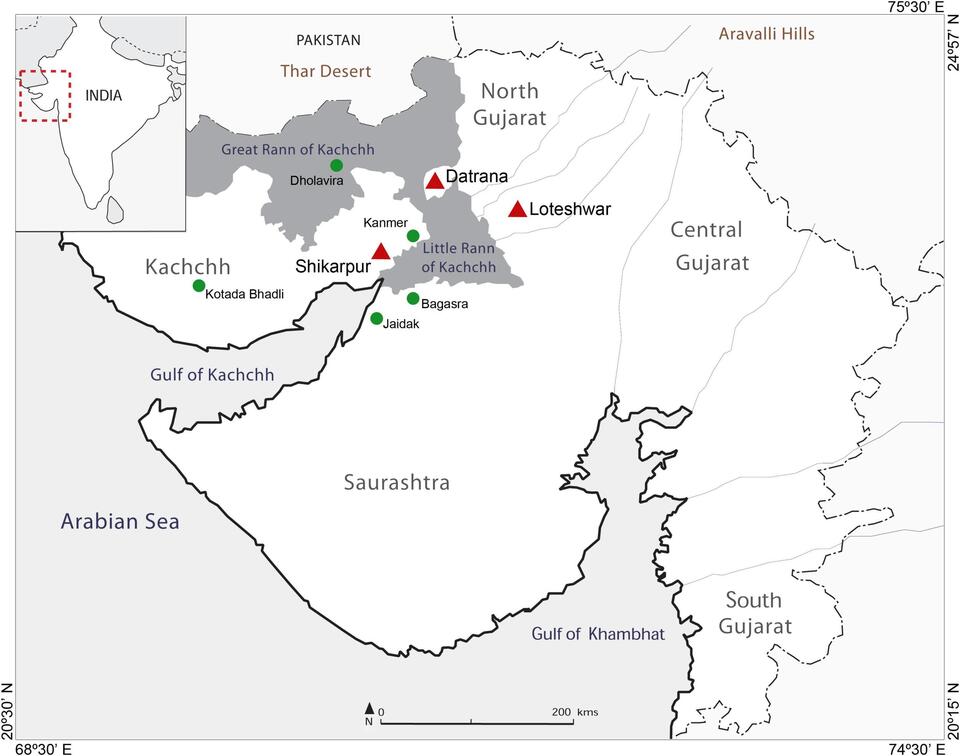A solid foray into the question of what the ancient Indus people, at least in Gujarat, cooked and ate, and how that might have changed after the civilization seems to have declined. Using some of the latest techniques, in particular by looking for both plant and animal residues in the same analyses, the authors are able to discern some interesting results. Changes seem to have been minimal, at least in these samples from three sites, between eras; fish seems not to have been consumed; a fair amount of the grains seem to have come from outside the area; there were traces of ginger – and much more. Well worth a read, and another example of how new research techniques can shed more and more light on the life of ancient civilizations.
Abstract
This study attempts a holistic approach to past foodways in prehistoric northern Gujarat, India, by considering evidence of food production, distribution, preparation and consumption. We present here the results of a pilot residue study, integrating lipid and starch grain analyses, conducted on 28 ceramic vessels from three Chalcolithic/Harappan settlements (c. 3300–2000 cal. BC) in northern Gujarat, which are discussed in the light of previous evidence of plant and animal acquisition and preparation strategies in this region. We aim to explore how the prehistoric inhabitants of northern Gujarat transformed ingredients into meals, focusing on how different foodstuffs were processed. When assessed on their own, the lipid and compound-specific isotopic data suggest that animal fats were primarily processed in ceramic vessels, specifically non-ruminant fats. However, lipid residue analysis favors the detection of fat-rich animal products and is often unable to disentangle signatures resulting from the mixing of plant and animal products. The incorporation of starch grain analyses provides evidence for the processing of a range of plants in the vessels, such as cereals, pulses and underground storage organs. Together, the results provide a holistic perspective on foodways and a way forward in overcoming preservational and interpretational limitations.
Image: Map of Gujarat showing the case studies (red triangles) and other archeological sites mentioned in the text (green circles). Background map prepared by Francesc C. Conesa.

